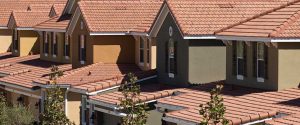When it comes to maintaining a healthy home, many factors come into play, including proper roofing ventilation. While it might not be immediately obvious, the ventilation of your roof plays a crucial role in the overall health and comfort of your living space. In this guide, we’ll explore the significance of roofing ventilation and how it contributes to a healthy home environment.
What Is Roofing Ventilation?
Roofing ventilation refers to the circulation of air within the attic or space beneath the roof. It typically involves the intake of fresh outdoor air and the exhaust of warm, moist air from inside the attic. Effective ventilation ensures that air flows freely through the attic space, preventing heat and moisture buildup.
The Benefits of Proper Roofing Ventilation
1. Temperature Regulation
In hot climates, a well-ventilated roof helps regulate the temperature within your home. By allowing hot air to escape from the attic, it reduces heat buildup, which can otherwise lead to uncomfortably high indoor temperatures.
2. Moisture Control
Roofing ventilation is essential for managing moisture. Moisture can accumulate in the attic due to various factors, such as condensation and roof leaks. Without proper ventilation, this moisture can lead to mold and mildew growth, wood rot, and structural damage.
3. Energy Efficiency
A well-ventilated attic helps maintain a consistent temperature throughout your home. This means your HVAC system doesn’t have to work as hard to cool or heat your living spaces, resulting in lower energy bills.
4. Roof Longevity
Proper ventilation can extend the lifespan of your roof by reducing the risk of premature deterioration. Excessive heat and moisture can cause roofing materials to break down over time, leading to costly repairs or replacements.
5. Improved Indoor Air Quality
Effective ventilation prevents the accumulation of harmful pollutants in your home’s indoor air. It helps remove indoor air contaminants and prevents them from infiltrating your living spaces.
Types of Roofing Ventilation
There are two main types of roofing ventilation:
- Intake Ventilation: This allows fresh air to enter the attic or roof space. Common intake ventilation methods include soffit vents, gable vents, and roof deck ventilation.
- Exhaust Ventilation: Exhaust ventilation systems expel hot and moist air from the attic. Common exhaust ventilation methods include ridge vents, box vents, and powered attic fans.
Maintaining Roofing Ventilation
Proper maintenance of roofing ventilation is essential for ensuring its effectiveness:
- Regularly inspect vents, fans, and the attic space for signs of damage, blockages, or leaks.
- Keep attic insulation from obstructing vents, as this can impede airflow.
- Remove debris, leaves, or other obstructions from vents and gutters to ensure unobstructed airflow.
- Address any roof leaks promptly to prevent moisture buildup in the attic.
Conclusion
Roofing ventilation may not be the most glamorous aspect of home maintenance, but it plays a crucial role in keeping your home healthy and comfortable. It regulates temperature, controls moisture, improves energy efficiency, and extends the lifespan of your roof. Neglecting proper roofing ventilation can lead to a host of problems, including mold growth, structural damage, and higher energy costs.
If you have concerns about your roofing ventilation or need assistance with ventilation system maintenance, contact Arizona Roofing Company. We can assess your ventilation needs and ensure that your home’s roofing system is contributing to a healthy and comfortable living environment. Reach us at 480-526-9455 or visit our website here for expert roofing services.




